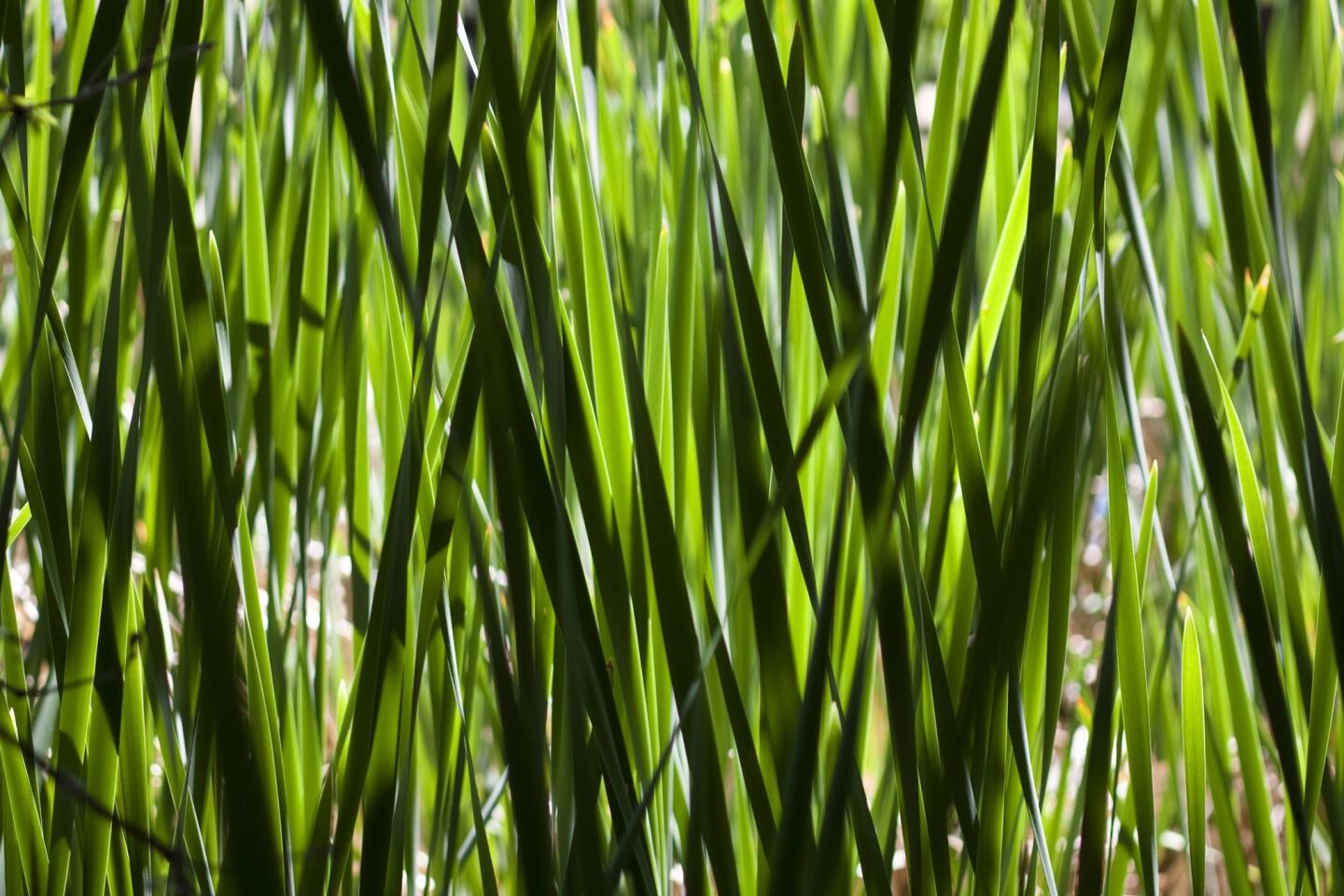New California botanic garden celebrates native conifers and plants
Reporting from Oak Glen, Calif. — Protecting the beauty and biodiversity of landscapes is a life’s work for men like David Myers. If the lanky naturalist takes you sightseeing, you’d best wear sturdy boots.
Myers, 62, is executive director and a co-founder of the nonprofit Wildlands Conservancy. The sightseeing on this day will be of the organization’s new garden, one of the largest in the United States dedicated to native conifers and plants.
The Southern California Montane Botanic Garden, which opens May 10, is designed to be a haven for tourists and a center for education programs promoting the protection of the region’s flora and fauna.
“Let me show you the good stuff,” Myers said, leading the way into a grove thick and dark with conifers and carpeted with primrose and ferns.
Framed by soaring peaks and watered by year-round streams cascading through overlapping biological zones — coniferous forests, chaparral, meadows and deciduous woodlands — the 300-acre expanse in the foothills of the San Bernardino Mountains is home to bobcats, songbirds and arboreal salamanders.
Along a trail to the prized trees, Myers stopped abruptly. “Look up,” he said, smiling and pointing at the swaying spires of incense cedars and Jeffrey pines more than 100 feet in height. “This garden is going to be our bully pulpit for conservation,” he said.
The conservancy, which has raised funds to preserve nearly 1,280 square miles of mountain and desert landscapes across the state, will charge no admission and hopes to attract 50,000 children a year. The garden is on Oak Glen Road, north of Interstate 10 and about 15 miles northeast of Redlands.
The diversity on display took eons to evolve.
Tim Krantz, a professor of environmental studies at the University of Redlands and an authority on the flora of the San Bernardino Mountains, says that during the last ice age, about a million years ago, the San Bernardino, San Gabriel and Santa Ynez mountains, which together comprise one of only two ranges that run east-west in the United States, provided refuge for a surprising variety of plants, many of them found nowhere else.
“During cold spells, cold-loving conifers such as lodgepole pines, for example, plunged down the slopes,” Krantz said. “When things warmed up, lowland plants found niches at higher elevations.”
“With each change, the mountains collected more species,” Krantz said. Today, the San Bernardinos harbor about 1,600 types of plants and trees — roughly a fourth of all the botanical species found in California, he said.
The garden’s five miles of trails allow visitors to get close enough to those species to take pictures of their blossoms or catch whiffs of the butterscotch fragrance coming from furrows in the bark of Jeffrey pines. The garden is dominated by a stand of giant sequoias established a century ago by Isaac Ford, a local surveyor whose dream was to plant a million trees in the region.
Along the trail, Myers frequently stopped to point out a biological or cultural site. One was a stretch of stream-fed pools that he said “will soon be lined with replanted aspens and dogwood trees.” Another was a rustic lodge already used as a classroom by visiting students. A pathway named Pioneer Pasture Loop overlooks apple trees growing in neat rows.
Patches of California wild roses and lemon lilies — a scarce, bright-yellow flower nearly wiped out by bulb hunters in the 1900s, hugged the shore of a pond shaded by three species of willows.
Pete Dangermond, a former director of California State Parks, said the garden will be unique. “Unlike many famous gardens in Southern California, it doesn’t feel manicured. Instead, it’s arranged in bucolic settings that reflect particular natural experiences: aquatic ecosystems, deciduous forest, chaparral, a wetlands boardwalk, the conifers of California.”
Myers said that opening the garden is just a beginning. “We’ll be adding at least 100 species of plants a year to our collection, building more ponds and putting in paths lined with scarlet buglers and other wildflowers.”
Next year, the garden will open a trail to the mightiest oak of all. The gargantuan tree, 499 inches in circumference, 97 feet in height and 98 feet in average crown, stands on a steep, rocky hillside overlooking a narrow stream-fed canyon thick with incense cedars, canyon maples and bracken fern.
The tree, certified in 2012 by the nonprofit American Forests organization’s National Big Tree Program as the country’s top “champion” oak, is on U.S. Forest Service property surrounded by conservancy landholdings.
Twitter: @LouisSahagun
















